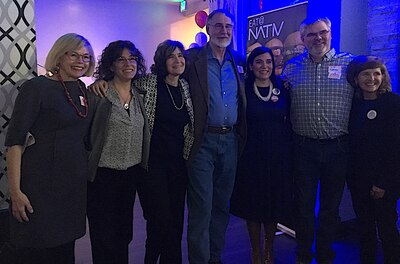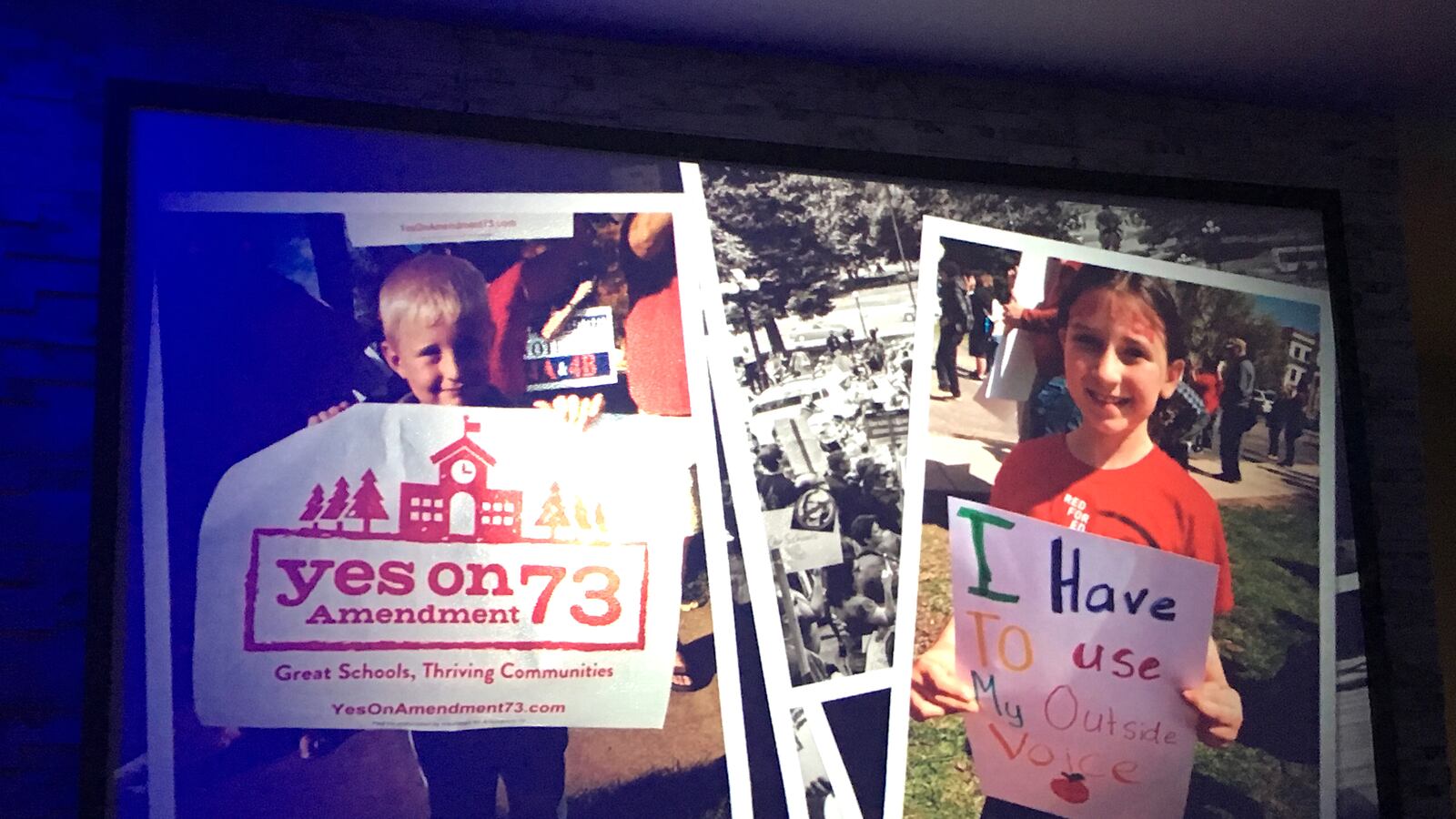With Colorado’s third attempt to raise taxes for education going down to defeat, backers of Amendment 73 looked to the future Tuesday.
Lisa Weil of Great Education Colorado said that the conversation around school funding was forever changed, with even opponents admitting the need for more resources in the classroom and better pay for teachers.
“We are within striking distance, and we are not going back,” she told a small and still cheerful crowd gathered at a downtown Denver hotel.
The breadth of the coalition was illustrated by Krista Spurgin, executive director of education reform group Stand for Children and Amie Baca-Oehlert, president of the Colorado Education Association, the state’s largest teachers union, embracing. Bret Miles of the Northeast Colorado BOCES described the tiny town of Seibert turning out a huge crowd in favor of more school funding.

But it was not enough to overcome Coloradans’ traditional reluctance to raise statewide taxes. Just 45.5 percent of voters said yes, with 55.5 percent rejecting the measure. To pass, 55 percent of voters needed to say yes.
Under Colorado’s Taxpayer’s Bill of Rights, the only way to raise taxes is to get voter approval. This is the closest that supporters have come yet, but victory proved elusive.
Luke Ragland of the conservative education advocacy group Ready Colorado welcomed the results.
“I don’t think this was a referendum on whether people want better schools or to pay teachers more,” he said. “It was a referendum on a poorly worded ballot measure with no strategy or plan to actually improve educational outcomes.”
Amendment 73 would have created a graduated income tax for people earning more than $150,000 a year and raised the state corporate tax rate. It also would have changed the assessment rate — the portion of property value that is taxed — for commercial and residential property. Altogether, these changes were projected to raise an additional $1.6 billion a year for preschool through 12th-grade education.
Amendment 73 would have set aside money to pay for full-day kindergarten and additional preschool slots, as well as targeting money to students with disabilities, those learning English, and those identified as gifted. The measure would have directed the legislature to come up with a new school funding formula and left a large share of the money for districts to spend how they see fit.
In 2013, backers of more education funding spent millions only to see Amendment 66 rejected by two-thirds of the electorate. Proponents of Amendment 73 raised a little more than $1 million and leaned heavily on local advocates, teachers, and school board members to get the word out through a grassroots campaign. They had hoped a wave of teacher activism here and around the country would drive increased support for education funding.
Weil said she believes voters heard that message, but supporters did not have the resources to reach enough people.
“The more people learned about Amendment 73, the more they liked it,” she said. “It is a difficult thing, we know, to get people to understand a policy, which is what we have to do. In Colorado, our tax policymakers are our voters. The thumb is on the scale because good policy is complex.”
In the coming days, Weil said supporters would do a “deep dive” into the vote results to see where support lay and build for a future effort. In the meantime, she said legislators “need to be problem solvers” and do better than they have.
On this, Ragland agreed.
“The real question is what’s next?” he said. “It’s crystal clear that people want better schools and for their teachers to be better compensated. There is a charge to the legislature to take up the school finance formula that’s been sitting there untouched since 1994. It’s time for a change.”
The Amendment 73 debate has played out as lawmakers have wrestled with how to fix a broken school finance system. The questions they’ve been asking go well beyond how much money Colorado schools need.
The current set of tax and distribution policies often end up giving more resources to rich districts that don’t tax themselves as much as they could and do little to account for students’ individualized needs. More money would have allowed lawmakers to avoid taking money from wealthier districts as they rework the system, but opponents of Amendment 73 argued it might just lock in the status quo.
Since the Great Recession, Colorado lawmakers have withheld $7.5 billion that would have gone to school districts under a constitutionally mandated formula to pay for other budget needs. Colorado spends $2,800 less per student than the national average, according to Education Week’s Quality Counts, which makes adjustments for regional cost differences.
Some 100 Colorado school districts operate on four-day weeks, in part to save money. Teacher salaries are low, especially in cash-strapped rural districts, and more than half of all students in third through eighth grade don’t meet state standards in reading, writing, and math.
Proponents of the measure argued the only way to do better by Colorado students is to put more money into the system. Raising salaries would help recruit and keep more teachers. More money could help lower class sizes and provide the support that disabled students or those learning English need to thrive.
Opponents said the tax increase would amount to a “blank check,” with no guarantees the money would improve student outcomes or even make it into teacher paychecks.

